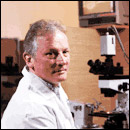Articles and reports from the Life Sciences and chemistry area deal with applied and basic research into modern biology, chemistry and human medicine.
Valuable information can be found on a range of life sciences fields including bacteriology, biochemistry, bionics, bioinformatics, biophysics, biotechnology, genetics, geobotany, human biology, marine biology, microbiology, molecular biology, cellular biology, zoology, bioinorganic chemistry, microchemistry and environmental chemistry.

Moscow researchers have made the supercritical carbon dioxide work. Saturated with special reagents, carbon dioxide first extracts uranium from the spent nuclear fuel waste, then extracts plutonium and then flies away into the atmosphere.
As a matter of fact, the spent nuclear fuel consists of multiple elements. First of all, this is uranium that did not burn out and plutonium obtained as a result of nuclear reaction and numerous fission fragments, both radio-active and non-radio-acti

University of Connecticut Health Center geneticists have made a two-fold discovery in gene recoding that will significantly increase understanding of the information in genome sequences and could prove to be a knowledge expressway scientists need for unraveling nervous system disorders such as Parkinson Disease and epilepsy. The research, published in the Aug. 8 issue of the journal Science, was supported by the National Science Foundation (NSF), the independent federal agency that sup

Researchers sifting through the indispensable machinery that senses and fixes broken DNA have discovered a new culprit that can induce instability in the genome and thereby set the stage for cancer to develop.
Studies in mice have shown that loss of H2AX, a gene that produces a protein called a histone that is part of the chromosomal structure, can tip the delicate balance of proteins that are curators of the human genome. When H2AX ceases to function properly, lymphomas and solid tu

Like the snap of a clothespin, the sudden mixing of closely related species may occasionally provide the energy to impel rapid evolutionary change, according to a new report by researchers from Indiana University Bloomington and three other institutions. Their paper was made available online by Science magazine´s “Science Express” service.
A study of sunflower species that began 15 years ago shows that the sudden mixing and matching of different species´ genes can create genetic super

Using a new approach for dissecting the complicated interactions among many genes, scientists at Dana-Farber Cancer Institute have discovered how a common cancer gene works in tandem with another gene to spur the unchecked growth of cells. The researchers say the technique was so useful in solving a longstanding puzzle that it may expedite the discovery of other such gene interactions that lead to cancer, and could accelerate the development of new cancer drugs.
The report in the Aug

New research from the University of North Carolina at Chapel Hill has identified two genes that play key roles in regulating blood vessel development.
The research appears in two reports published in the Aug. 15 issue of Molecular and Cellular Biology, a professional journal. Dr. Cam Patterson, professor of medicine and director of the Carolina Cardiovascular Biology Center and a member of the UNC Lineberger Comprehensive Cancer Center, led both studies.
Both research papers